Sizdah Bedar Festival | 13th Farvardin in Iran
The Sizdah Bedar Festival, also known as "Nature's Day" or "Nature's Thirteen," is an annual celebration observed in Iran.
This vibrant festival takes place on the thirteenth day of Farvardin, the first month of the Iranian calendar, which usually falls around April 1st. Sizdah Bedar marks the end of the Nowruz festivities and is a time when families and friends come together to enjoy the outdoors, engage in recreational activities, and bid farewell to the holiday season.
The Sizdah Bedar Festival holds immense significance in Iranian culture, symbolizing the renewal of life, the arrival of spring, and the connection between humans and nature. Iranians believe that spending the day outdoors on Sizdah Bedar brings good fortune and happiness for the coming year. The festival's customs and traditions have been passed down through generations, representing a rich cultural heritage and a strong sense of community.
In this article, we introduce you to one of the most important festivals in Iran, its history, traditional customs and rituals, and symbolism and cultural significance.
Historical and Cultural Background of the Sizdah Bedar Festival in Iran
The Sizdah Bedar Festival traces its origins back to ancient Persian traditions and folklore. The festival's roots can be found in the ancient celebration of "Tirgan," which marked the arrival of summer and was dedicated to the goddess of rain, Tir. Over time, Tirgan merged with other regional and cultural practices, eventually evolving into Sizdah Bedar as it is known today.

Sizdah Bedar holds deep cultural and traditional significance in Iran. It reflects the Iranian people's close connection with nature and their reverence for the changing seasons. The festival represents a celebration of life, renewal, and the arrival of spring. It is a time to bid farewell to the winter and welcome the blooming of flowers, the warmth of the sun, and the rejuvenation of the natural world.
Beyond its association with nature, Sizdah Bedar also holds social and familial importance. It provides an opportunity for families and friends to come together, strengthening bonds and creating cherished memories. The festival promotes a sense of unity, as people of all ages and backgrounds join in the festivities, sharing laughter, food, and joy.
Learn about the Persian (Iranian) New Year!
Evolution Over Time
Throughout history, the Sizdah Bedar Festival has experienced evolution and adaptation, mirroring the changes in Iranian society. While the core essence of the festival has remained intact, certain aspects have evolved over time. With the spread of urbanization and modernization, Iranians have adapted the festival to suit their changing lifestyles.
For instance, in earlier times, Sizdah Bedar was predominantly celebrated in rural areas, where communities had easy access to vast natural landscapes. However, as cities expanded, parks and public gardens became popular venues for the festival, offering urban dwellers a place to connect with nature. This transition from rural to urban settings has allowed the festival to remain relevant and accessible to a wider population.
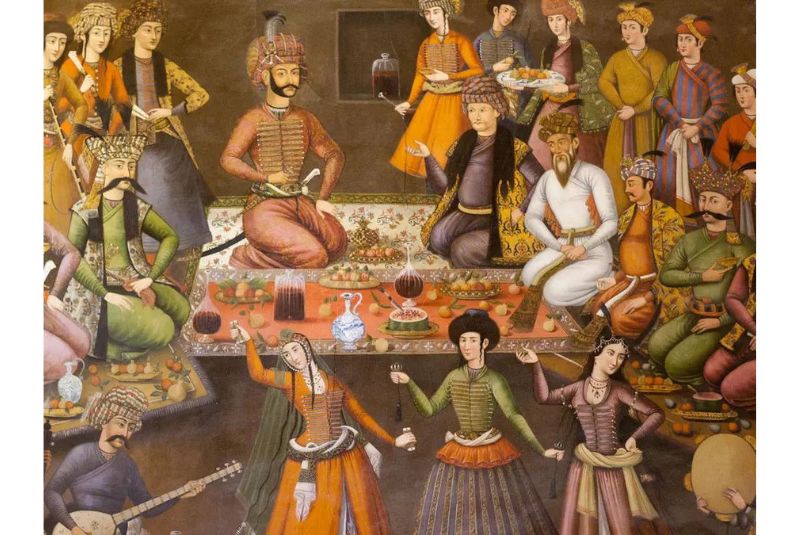
Additionally, the rise of technology and social media has influenced the way Sizdah Bedar is celebrated and shared. Today, Iranians often capture and document their Sizdah Bedar experiences through photographs and videos, which are then shared on various social media platforms. This digital presence has enabled the festival to reach a broader audience, both within Iran and internationally, fostering cross-cultural understanding and appreciation.
Despite these changes, Iranians have made conscious efforts to preserve the core traditions and customs associated with Sizdah Bedar. Families continue to prepare traditional dishes, engage in tie-tying ceremonies, and participate in outdoor activities. Moreover, cultural organizations and government initiatives strive to promote the festival's heritage and ensure its preservation for future generations.
The Sizdah Bedar Festival in Iran has a rich historical and cultural background. Its origins can be traced back to ancient Persian traditions, and it has evolved over time to accommodate changing societal dynamics. The festival's significance lies in its celebration of nature, the renewal of life, and the strengthening of familial and communal bonds. Despite modern influences, Iranians remain committed to preserving the festival's traditions, ensuring its continuation as a cherished cultural event.
| Read more: Chaharshanbe Suri: The Festival of Fire and Renewal in Iran
Date and Duration of Sizdah Bedar Festival in Iran

The Sizdah Bedar Festival takes place annually on the thirteenth day of Farvardin, the first month of the Iranian calendar. This typically falls around April 1st in the Gregorian calendar. The number thirteen, considered an unlucky number in many cultures, holds a special significance in Iranian folklore, where it is believed to ward off evil spirits. Sizdah Bedar serves as a joyful occasion to celebrate and counteract any ill omens associated with this number.
The duration of the festival spans a single day. Families and friends venture outdoors, often to parks, forests, or countryside areas, to make the most of the festivities. The day is marked by laughter, merriment, and a vibrant atmosphere as people immerse themselves in the natural beauty surrounding them.
Sizdah Bedar is closely linked to the Persian New Year, known as Nowruz. Nowruz, which marks the beginning of spring and the Iranian calendar year, is celebrated on the vernal equinox, usually around March 21st. Nowruz is a 13-day celebration filled with symbolic rituals and customs, culminating in Sizdah Bedar on the thirteenth day.
During Nowruz, families gather to set up a ceremonial table called the Haft Seen, which is adorned with seven symbolic items that begin with the Persian letter "seen" (S). These items represent various wishes and hopes for the coming year. On the thirteenth day of Nowruz, families bring the Sabzeh (sprouts) from their Haft Seen and throw them away in running water, symbolizing the end of the holiday season and the transition into the new year.
Sizdah Bedar serves as the grand finale of Nowruz, providing a joyful conclusion to the two-week-long festivities. It is a day to bid farewell to the cherished customs and traditions associated with Nowruz and to embrace the arrival of spring with renewed energy.
| Suggestion: Yalda Night: An Ancient Persian Celebration
Rituals and Activities During the Festival Period
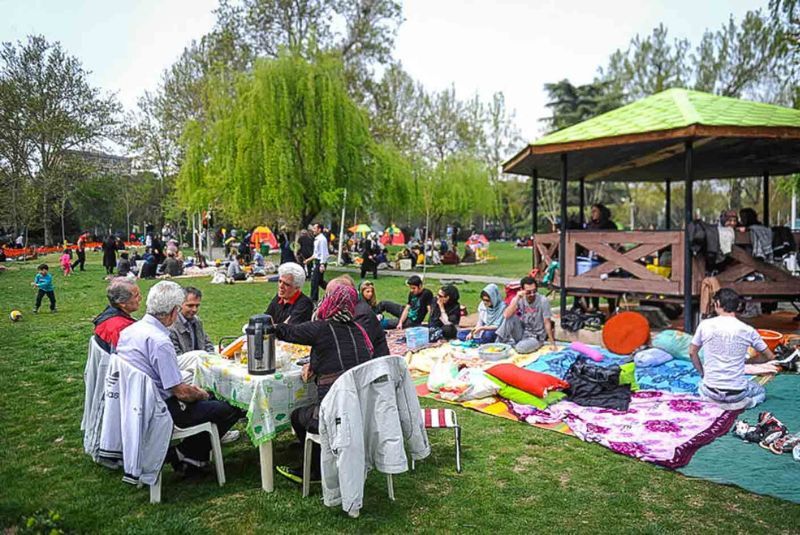
Sizdah Bedar is characterized by a variety of rituals and activities that take place throughout the day. One of the central customs is picnicking in natural settings. Families and friends gather in parks, gardens, or countryside locations, armed with baskets filled with delicious food, colorful blankets, and pillows. They spread out their picnic spreads, creating a vibrant tapestry of flavors and aromas.
Tie-tying ceremonies are also popular during Sizdah Bedar, particularly among single individuals. Young girls and boys participate in the tradition by tying knots in blades of grass, symbolizing their desire to find a partner and get married. This lighthearted ritual adds an element of playful romance to the festivities.
Outdoor games and recreational activities are an integral part of Sizdah Bedar. People of all ages engage in various sports, including football, volleyball, badminton, and traditional Iranian games like "Kodi" (a game of tag). Kite flying is also a common sight, with colorful kites soaring in the sky, adding to the festive ambiance.
As the day progresses, families and friends engage in lively conversations, share stories and laughter, and create lasting memories. The atmosphere is filled with joy, music, and dancing, as Iranians embrace the spirit of spring and the beauty of nature.
| Discover: Sama Dance | A Spiritual Journey in Persian Culture
Preparation and Planning
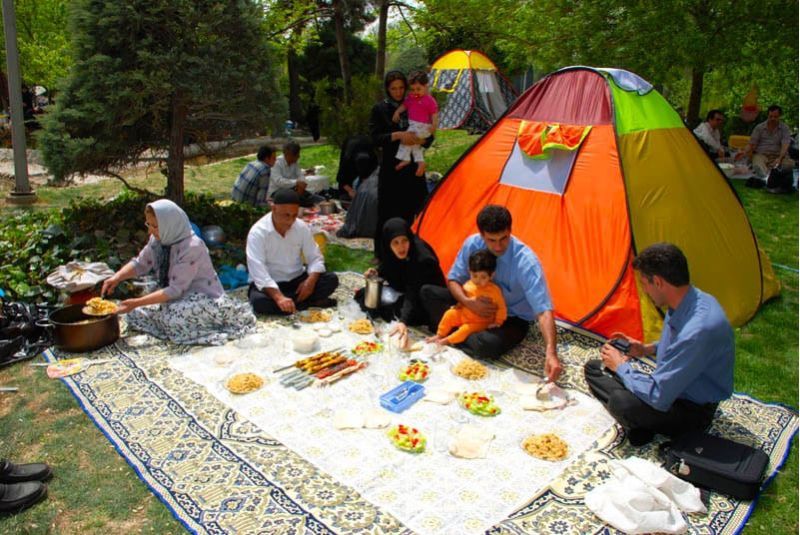
In the days preceding Sizdah Bedar, Iranians engage in various preparations to ensure a memorable and enjoyable celebration. Families start by organizing the logistics of the outing, choosing a suitable location for their picnic and coordinating with relatives and friends who will join them. It is common for families to invite extended family members and close friends, creating a larger gathering filled with warmth and camaraderie.
To make the Sizdah Bedar outing a success, families undertake a range of customary tasks and arrangements. These include meticulously planning the menu, preparing a variety of traditional dishes, snacks, and sweets that will be enjoyed during the picnic. Popular choices often include kebabs, rice dishes, salads, and pastries.
Additionally, families ensure they have the necessary picnic supplies. Colorful blankets, cushions, and low tables are packed, providing a comfortable setting for dining and relaxation. Plates, cups, utensils, and serving trays are meticulously selected and packed, adding a touch of elegance to the outdoor feast. Coolers or insulated bags are prepared to keep food and beverages fresh throughout the day.
Festive Decorations and Traditional Elements
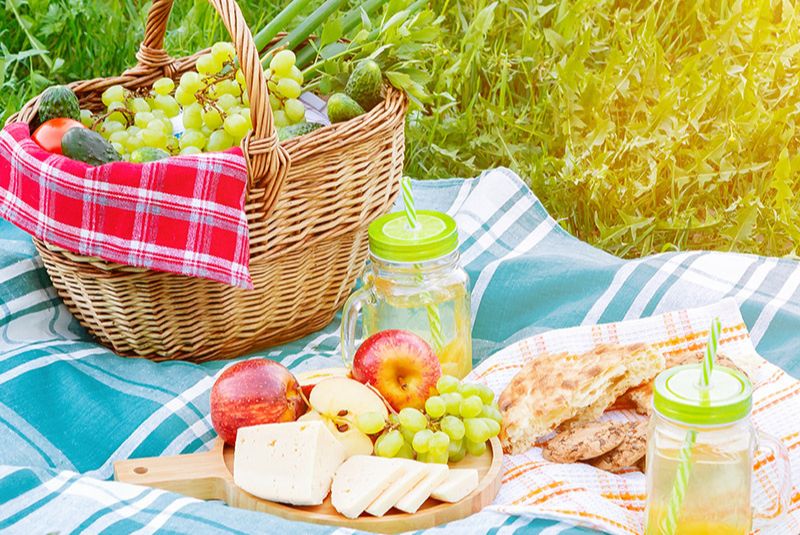
Festive decorations play a significant role in creating an enchanting ambiance for Sizdah Bedar. Families often bring items such as colorful banners, balloons, and ribbons to adorn their picnic area. These decorations infuse the surroundings with joy and cheerfulness, reflecting the celebratory spirit of the festival.
In addition to decorative elements, families often incorporate traditional elements into their Sizdah Bedar celebrations. They may bring items associated with Nowruz, such as the Sabzeh (sprouts) from their Haft Seen table. These sprouts, representing renewal and growth, are carefully arranged and displayed at the picnic, adding a symbolic touch to the festivities.
To add an extra layer of charm, families may also bring traditional musical instruments, such as the Tar, Kamancheh, or Santoor, to serenade their gathering with live music. These melodic tunes enhance the festive atmosphere and encourage spontaneous singing and dancing, further amplifying the joyous ambiance of Sizdah Bedar.
| Discover: Tirgan Festival; Water Festival in Iran from Ancient Times
Traditional Customs and Rituals
The Sizdah Bedar Festival is synonymous with outdoor picnics, providing an opportunity for families and friends to immerse themselves in the beauty of nature. Parks, gardens, and countryside areas become vibrant gathering spots as people lay out colorful blankets, set up picnic spreads, and enjoy the fresh air.
During the picnics, there is a deep appreciation for nature's wonders. Families take leisurely walks, marveling at blooming flowers, lush greenery, and the soothing sound of flowing water. The sights, sounds, and fragrances of the natural environment create a serene backdrop for the festivities, fostering a sense of tranquility and rejuvenation.
Tie-Tying Ceremony for Singles
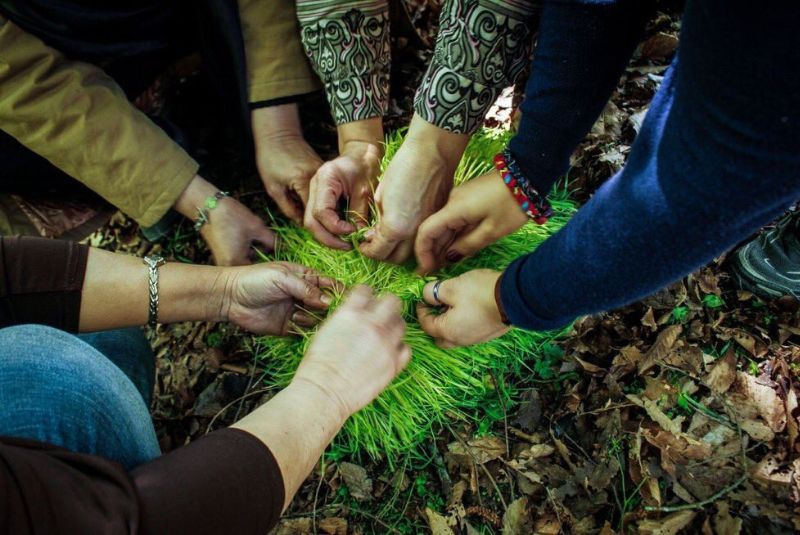
A cherished tradition during Sizdah Bedar is the tie-tying ceremony, particularly popular among unmarried individuals. Young girls and boys participate in this lighthearted custom, symbolizing their desire to find a partner and get married.
During the ceremony, participants take blades of grass and playfully tie them into knots, representing their hopes for a future romantic connection. It is believed that by engaging in this ritual, luck in love and marriage will come their way. The tie-tying ceremony adds an element of joy and anticipation to the festival, creating an atmosphere of youthful enthusiasm.
Outdoor Games and Recreational Activities

Sizdah Bedar is a time for revelry and outdoor fun. People of all ages engage in a variety of games and recreational activities, fostering a sense of camaraderie and friendly competition.
Sports such as football, volleyball, and badminton are commonly played, bringing together family members and friends to showcase their athletic skills. Traditional Iranian games, like "Kodi" (a game of tag) or "tug-of-war," also make an appearance, adding a cultural touch to the festivities.
Kite flying is another beloved activity during Sizdah Bedar. Colorful kites take to the sky, dotting the horizon with their vibrant hues. It is a sight that brings delight to both participants and spectators, creating a sense of wonder and playfulness.
Legend of Throwing Away the "Sabzeh" (Sprouts)
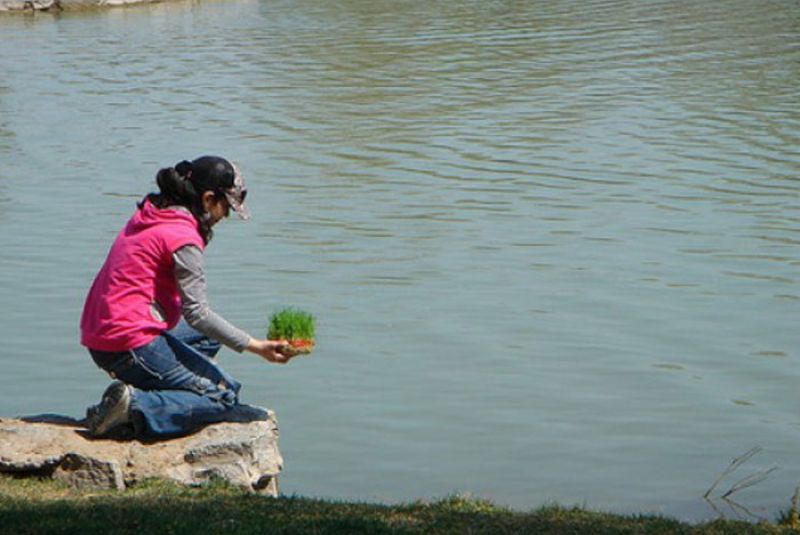
One of the most captivating legends associated with the Sizdah Bedar festival in Iran is the tradition of throwing away the Sabzeh (sprouts) grown for the Nowruz holiday. These sprouts symbolize the rejuvenation of life and the hopes and wishes made during the New Year.
On the thirteenth day of Sizdah Bedar, families gather near rivers or streams and gently release the Sabzeh into the flowing water. As the sprouts float away, it is believed that any misfortune or negative energy accumulated during the year is carried away, making room for new beginnings and a fresh start.
This act of throwing away the Sabzeh is accompanied by prayers and good wishes for a prosperous future. It is a poignant ritual that connects people with the cycles of nature and serves as a symbolic gesture of renewal and purification.
Bottom Line
The Sizdah Bedar Festival in Iran presents a unique and captivating experience for tourists. It offers a glimpse into the vibrant Iranian culture through outdoor picnics, tie-tying ceremonies, and engaging recreational activities. Tourists have the opportunity to witness the deep bond between Iranians and nature, as they celebrate amidst the beauty of spring. Participating in this festival not only provides an enriching cultural experience but also fosters connections with local Iranians, creating lasting memories of Iran's rich heritage.
Share your story!
Comment below and let us know about your Experience.
Your story inspires others!


Comment
Leave a Comment